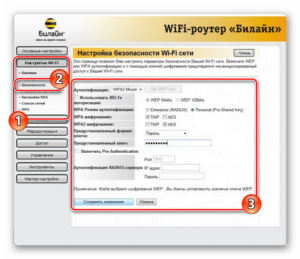Reflashing a router is replacing the device’s firmware with another, third-party version. This can be useful if you want to expand the functionality of your router, improve speed, improve security, or simply access additional settings. However, you need to understand that reflashing the router can lead to loss of warranty for the device and even to its failure. Therefore, if you are not confident in your knowledge and experience, it is better to turn to specialists. If you decide to flash the firmware yourself, then you will need to download new firmware from the manufacturer’s official website or from a reliable resource, then go to the router settings and complete the update procedure. But remember that each router has its own characteristics and the flashing procedure may differ depending on the model. Therefore, before you start, be sure to read the instructions from the manufacturer or look for a detailed guide on the Internet.
- The main advantages of flashing a router
- Steps to flash the router
- How to connect to the router and enter its settings
- How to download and install new firmware for a router
- Solving problems when flashing a router
- What to do if the router does not boot after flashing
- How to restore old router settings if something went wrong
The main advantages of flashing a router
Reflashing a router is the process of replacing the original firmware with an alternative one. This provides many benefits that can ensure more stable and secure operation of the device.
The main advantages of flashing a router:
1. Advanced features. In alternative firmware of the device, many additional functions appear that are not in the original firmware. You can configure more advanced security settings, improve connection speed, set up a VPN, and much more.
2. Improved security. Alternative firmware can provide more reliable protection for your Wi-Fi network from hackers and other intruders.
3. Accelerated work. Alternative firmware can speed up your router, allowing you to load pages faster and watch videos without lag.
Flashing a router can be a difficult process for beginners, but if you follow our guide, you can do it easily and safely.
Steps to flash the router
Reflashing a router is the process of updating the router software, which allows you to improve its operation, expand functionality and eliminate possible errors.
Step 1. Preparing for flashing.
Before you start flashing the router, you need to download the latest firmware and save it on your computer. It is also recommended to make a backup copy of the router settings so that in case of unsuccessful flashing, you can quickly restore the device to functionality.
Step 2. Connect to the router.
To reflash the router, you need to connect to it through a browser. To do this, enter the IP address of the router in the address bar of your browser (usually 192.
168.
0.
1 or 192.
168.
1.
1). After this, enter your username and password to access the router settings.
Step 3. Select firmware.
In the router settings menu, find the “Firmware Update” or “Firmware Upgrade” section. Then select the downloaded firmware and click the “Update” or “Upgrade” button. Wait for the flashing process to complete.
Step 4. Reboot the router.
After flashing, the router must be rebooted. To do this, click the “Reboot” or “Reboot” button in the router settings menu.
Step 5. Functionality check.
After rebooting the router, check its functionality. If everything works correctly, you can start setting up the router according to the instructions.
Reflashing a router is a simple process that can improve its performance and expand its functionality. Follow the instructions and do not forget to make a backup copy of the settings so that if the flashing is unsuccessful, you can quickly restore the router to functionality.
How to connect to the router and enter its settings
Before flashing the router, you need to connect to it and enter its settings. To do this you need to do the following:
1. Connect your computer to the router using an Ethernet cable or connect to the router's Wi-Fi network.
2. Open your browser and enter the router's IP address in the address bar. Typically the address is 192.
168.
0.
1 or 192.
168.
1.
1. If you are not sure what address your router has, check its documentation or contact the manufacturer.
3. Enter your username and password to enter the router settings. If you do not know your username and password, check the documentation for your router or contact the manufacturer.
4. After successfully logging in, you will be taken to the router settings, where you can change various parameters and settings.
Do not forget that making incorrect changes may result in the router not working. Before making any changes, back up your settings and follow the manufacturer's instructions.
How to download and install new firmware for a router
Updating the router firmware is an important procedure that allows you to improve the operation of the device and correct possible errors. You can download new firmware from the router manufacturer's website.
Step 1. Find your router model on the manufacturer’s website and download the appropriate firmware.
Step 2. Go to the router control panel. To do this, enter the IP address of your router in the address bar of your browser. If you don't know the IP address, you can find it in your device's documentation.
Step 3. In the control panel, find the “Firmware Update” section. It is usually located in the Settings or System section.
Step 4: Click the Browse button and select the downloaded firmware file.
Step 5: Click the Update button. The installation process may take several minutes.
After installing the new firmware, it is recommended to reset the router settings to factory settings. To avoid data loss, make a backup copy of your settings before resetting.
Reflashing your router is an easy way to improve the performance of your device and ensure its security. Follow the instructions and don't forget to back up your settings.
Solving problems when flashing a router
Reflashing your router can cause several problems, such as loss of network connection or inability to enter the router settings. However, there are several ways to solve these problems.
The first and most important step is to check that the router is compatible with the firmware you are trying to install. Some firmware may not be compatible with certain router models, so you need to make sure you are using the correct firmware.
If you have problems with your network connection after flashing, try resetting your router to factory settings. This may help resolve any settings conflicts that may have arisen during the flashing process.
If you cannot enter the router settings after flashing, try using a different browser or clearing the browser cache and history. It may also help to enter your username and password manually rather than copying them from a text file.
In some cases, it may be necessary to re-flash the router. Make sure you are using the correct firmware and follow the manufacturer's instructions to avoid errors.
Flashing a router can be a complicated process, but with the right preparation and following instructions, you can avoid problems. If you are still experiencing difficulties, contact your router manufacturer or visit the forums for more help.
What to do if the router does not boot after flashing
Reflashing your router can be useful to get new features or fix bugs. However, sometimes after flashing the router may not boot. What to do in such a situation?
1. Try resetting your router to factory settings. To do this, press the 'Reset' button on the back panel of the router and hold it pressed for about 10 seconds.
2. Check if you have chosen the correct firmware for your router. Incorrect firmware can lead to the router not working.
3. Check if your router is in Recovery mode. Recovery mode allows you to restore the router after an unsuccessful flashing. In order to enter Recovery mode, you need to hold down the Reset button on the back panel of the router, turn it on and hold the Reset button pressed for about 30 seconds.
4. If all else fails, contact your router manufacturer's technical support for further assistance.
Flashing your router can be a useful tool, but you need to be careful and follow the manufacturer's instructions. If you encounter a problem after flashing your router, don't panic. Follow the above steps and you should be able to resolve the issue.
How to restore old router settings if something went wrong
During the process of flashing the router, problems may arise, and as a result, settings may be lost. If this happens, don't panic. There are several ways to restore your router's old settings.
1. Use the restore settings function. Most routers have a reset feature that allows you to return the router to factory settings. Typically, to do this you need to press the reset button on the back of the router for 10-15 seconds.
2. Restore settings from backup. If you regularly back up your router settings, restoring it will be an easy process. To restore settings from a backup, you need to go to the router settings menu and select the option to restore from a backup.
3. Enter the settings manually. If you have not backed up your router settings, you will have to enter all the settings manually. To do this, you need to know all the settings parameters, such as IP address, subnet mask, default gateway, etc.
d.
In any case, if you have problems during the process of flashing the router, you should not immediately run to the store for a new device. There are many ways to solve problems, and with the help of this guide you can quickly and easily restore your router settings.
Read further:






